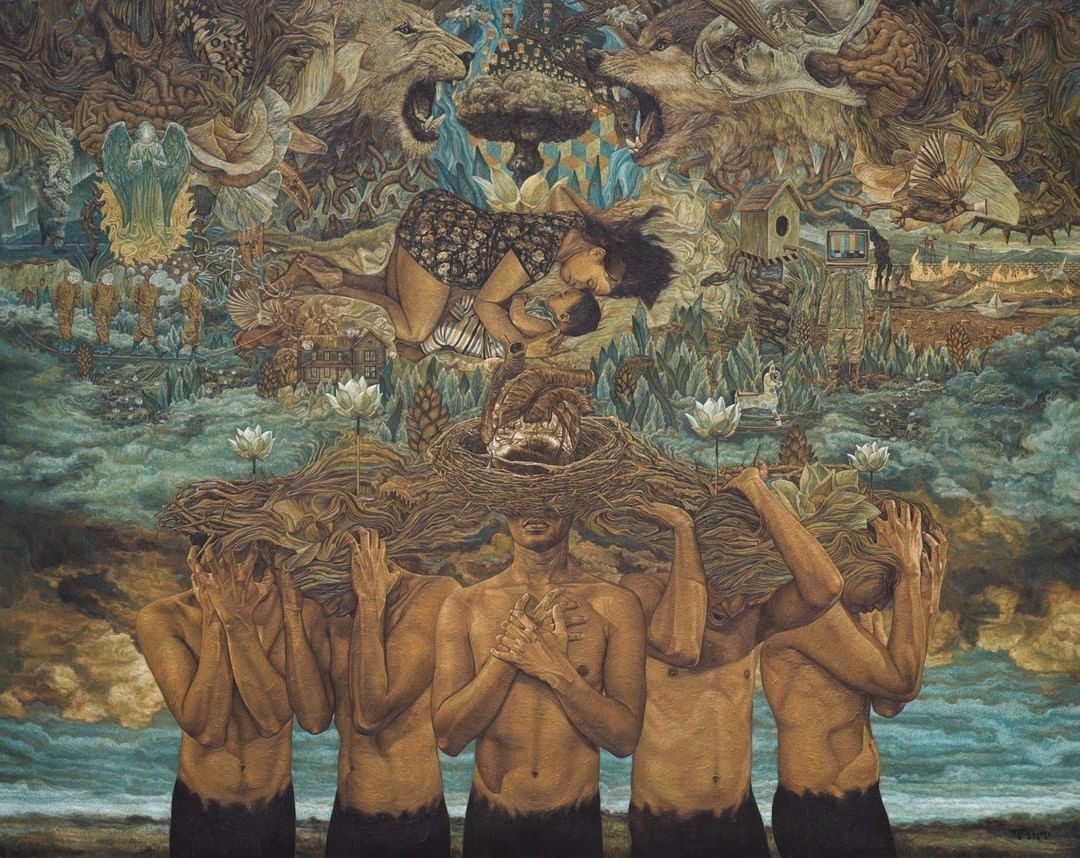
Can your creative business survive a mass extinction?
By Trinity Yeung
August 11, 2021
“Can your creative business survive a mass extinction?” asked Paolo Mercado during the Creative Futures conference last June 28. Mercado is the president of the Creative Economy Council of the Philippines – a non-profit, private sector organization that aspires to fill the gap of a unified voice in the country’s creative economy.
During the wake of the pandemic’s global disruption, the creative industries were among the frontline fatalities. The previous year met a devastating loss for the sector: over 5,000 or 90% of projects, with 4,000 workers caught in the crossfire with the unforeseen halt in business. “The Filipino creative industries suffered heavy losses because of behavioral restrictions and the safety protocols affected the way people consumed creative work,” said Mercado.
Mercado presented consolidated data from the past year, illustrating the plummeting of the Philippines’ business environment, making it among the most affected countries in the ASEAN region. The data recorded 70.6% in temporarily closed businesses and 19.1% in cancelled contracts, of which only 1.9% recovered.. Moreover, the film, events, and heritage industries incurred revenue losses between 85 to 90%. Television and radio reported more than 50% of revenue losses, while traditional advertising lost between 30 to 50%.
Mercado reiterated that despite the pandemic Filipinos are still regarded as one of the top creative performers in the world. “The Philippines was and still continues to be well-known for [its] world-class creative talent,” he said, “The most prominent and salient of which are on the world stage.”
More data presented by Mercado showed how the size and value of creative exports from the Philippines ranked fifth in the ASEAN region, amounting to $4.1 billion, while ranking first in creative services, valued at $3.2 billion – surpassing the likes of Singapore, Indonesia, and Thailand. According to Mercado, the Filipino creative economy currently accounts for 6.5 to 7% of the country’s gross domestic product. However, this number only includes the copyright-based sector such as advertising, press and literature, visual arts, and motion pictures, albeit excluding large contributors such as the heritage and gastronomy industries.
The country’s creative economy is among one of the largest in Asia. Yet, despite these impressive numbers, the Philippines still lags in its capability, inducement, and environmental aptitude for creative output. In 2015, Ernst & Young and UNESCO identified the Asia-Pacific region as having the largest creative economy in the world, harnessing over $743 billion in revenue. This statistic goes head-to-head with Europe’s $709 billion creative economy, with North America’s $620 billion following close behind. In 2013, South Korea established a Creative Economy Action Plan with the hopes of launching a new creative renaissance in the country. After extensively studying the potential of a culture-led industry, the Plan led to a skyrocketing number of Korean creative exports—from K-dramas to K-pop, all of which fall under the overcasting “Hallyu” wave that has since engulfed the world.
The Philippines is yet to experience the creative paramountcy its neighbors currently revel in. Aside from the continuous devaluation it faces as a result of the pandemic, the existing data on the Filipino creative economy is insufficient to analyze long-term forecasts or trends - most of which are acquired from registered businesses. This type of data doesn’t take into account the work done by the country’s creative freelancers which, in recent years, comprises the majority of the creative labor market. There are nearly a million formally-employed workers in the Philippines. On the other hand, Filipino freelancers make up for two to three million of domestic creative work, with 1.5 million undertaking international work. Recognizing the contribution of creative freelancers directly affects opportunities for further improvements in the sector - its potential currently barred by scant data collection and analysis.
Apart from championing recognition for the Filipino creative economy, CECP’s proposed framework is focused on the sole idea of creating a new creative regime for the country through scaling, studying, and marketing the country’s creative sector, in the hopes that this will eventually influence public policy. The CECP and the Department of Trade and Industry have worked alongside lawmakers to put the concerns of the creative industries into legal writing. With deliberations underway on the proposed Creative Industries Development Act, lawmakers must now define the country’s scattered creative industry, hoping to designate a centralized body which, under the Act, will develop and cultivate the aims of the creative economy. Most remain plagued with the misconception that the creative economy cannot be prioritized, misidentifying it as a slow mover for economic growth. However, as Mercado outlines, the rise of this robust creative sector is undeniable. It’s only a matter of time before a rightful turnover takes place.
The creative economy still remains susceptible to mass extinction events, such as the ongoing pandemic. There are, however, some outliers: survivors of mass extinction – those who opted to align with their circumstances and, subsequently, found a fitting solution. Mercado culminates his talk with a parting quote from evolutionist Charles Darwin.
"It is not the strongest of the species that survives, nor the most intelligent. It is the one most adaptable to change.”


